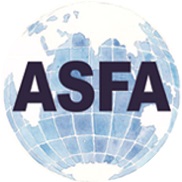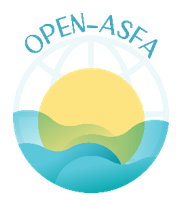Structure trophique des peuplements de nématodes libres marins dans un milieu expérimentalement enrichi en cadmium et/ou en hydrocarbures (diesel)
DOI:
https://doi.org/10.71754/instm.bulletin.v32.764Keywords:
feeding groups, free living nematodes, heavy metals, cadmium, dieselAbstract
A microcosm experiment was carried out to study the influence of cadmium and/or diesel on the trophic structure of a free living nematode community of a Tunisian lagoon. Sediments were contaminated by three cadmium concentrations (low (0.54 mg kg-1 (dw)), medium (0.90 mg kg-1 (dw)) and high (1.4 mg kg-1 (dw)), and effects were examined after 90 days. Univariate analysis showed that most univariate indices did not change significantly neither at all the levels of cadmium contamination nor at 0.25 mg kg-1 2qS(dw) diesel concentration. Thus, the trophic index( ) was only affected by the cadmium low dose [Cd (L)] and the 1B/2A ratio was reduced in the microcosms treated with a medium cadmium concentration [Cd (M)] and also in the replicates contaminated with diesel at 0.25 mg kg-1 (dw) but this index (1B/2A) significantly increased in the microcosms treated with the cadmium-diesel mixture [Cd (H) + Dies 0.25]. Multivariate analyses of the feeding group abundance data demonstrated that the community trophic structure was not affected neither at all the levels of cadmium contamination nor at 0.25 mg kg-1 (dw) diesel concentration. But, at the cadmium-diesel mixture significant differences were recorded between nematode assemblages from uncontaminated sediment control microcosm and those from cadmium-diesel mixture amended sediment treatments. The replicates contaminated with the mixture of cadmium and diesel were dominated by predators (2B) (53,50%). The most abundant species of this group (2B) were Oncholaimus campylocercoïdes (19,56%), Enoploïdes sp. (12,38%), Mesacanthion hirsutum (8,88%), Bathylaimus australis (5,65%) and Oncholaimellus mediterraneus (4,11%). The control microcosme (C), those contaminated by increasing levels of cadmium [Cd (L), Cd (M), Cd (H)] and the treated with diesel [Dies 0,25] were dominated by epistrate feeders (2A) (>47%). This group (2A) was mainly represented by Marylynnia stekhoveni (12,61%), Calomicrolaimus honestus (12,44%), Hypodontolaimus colesi (9,65%), Neochromadora trichophora (5,05%) and Odontophora wieseri (3,74%).












